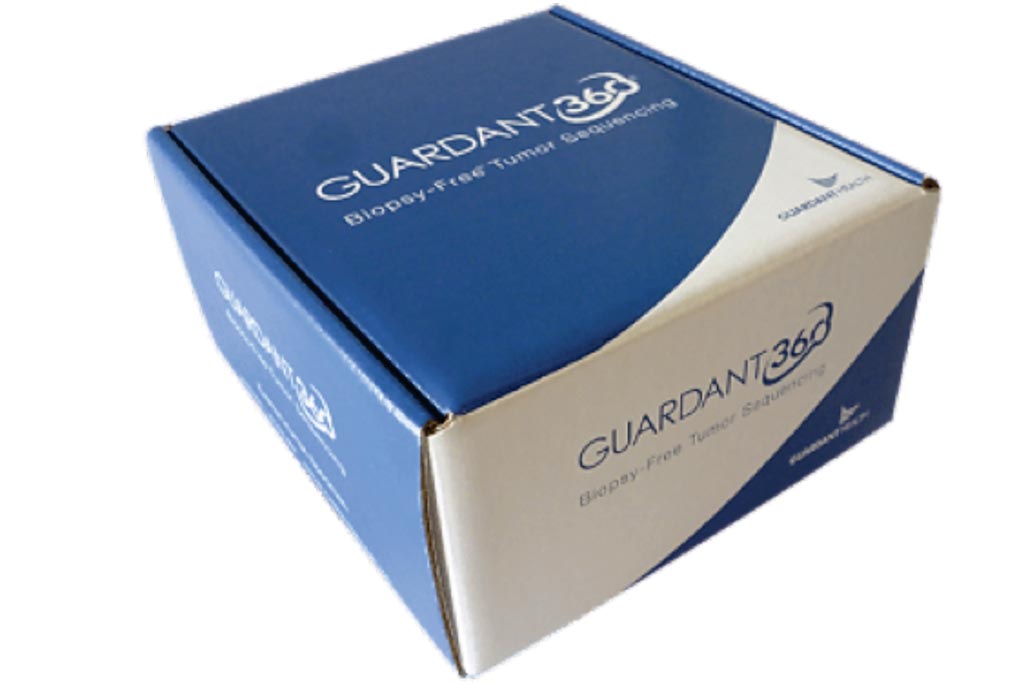Test Identifies More Treatable Cancer Mutations Than Biopsies
By LabMedica International staff writers
Posted on 22 Oct 2018
Standard of care therapies that target specific mutations have changed the face of cancer treatment, and screening for such mutations, which can be drivers of both disease growth and treatment resistance. This can often be done with a biopsy of tumor tissue, but sometimes that tissue is hard to obtain or does not have sufficient DNA for analysis.Posted on 22 Oct 2018
As mutations may change over the course of treatment, meaning patients are sometimes subjected to multiple invasive biopsies. Instead, liquid biopsies use circulating tumor DNA (ctDNA), shed by tumors and circulating in the blood, to test for mutations using next-generation sequencing (NGS). Since ctDNA can be obtained through a simple blood test this ultimately gives patients more therapeutic options and helps them avoid the discomfort and inconvenience of an invasive biopsy procedure.

Image: The Guardant360 gene panel is a technology capable of isolating circulating tumor DNA in blood to identify genomic alterations in tumor genomic panel. This test allows identify genomic alterations and match them to treatment options (Photo courtesy of Guardant Health).
A team of scientists working with the Abramson Cancer Center of the University of Pennsylvania (Philadelphia, PA, USA) conducted a single-center prospective study from April 1, 2016, through January 2, 2018. Eligible patients had histologically confirmed stage IV non–small cell lung cancer (NSCLC), and plasma NGS was performed as part of routine clinical testing at diagnosis or at disease progression. The study included 323 patients treated, 113 (35%) of who were determined to have targetable mutations.
Plasma was analyzed by Guardant Health (Redwood City, CA, USA) and during the study, the Guardant 360 panel expanded from 70 genes for116 patients to 73 genes for 207 patients. Clinically relevant mutations included therapeutically targetable driver and resistance mutations in EGFR, ALK, MET, BRCA1, ROS1, RET, ERBB2, and BRAF. KRAS mutations were also included because these are generally mutually exclusive with other targetable variants and obviate further consideration of targeted therapy. A median of three mutations (range, 0-14) was detected per patient in plasma; however, no patient had more than one therapeutically targetable mutation detected.
The scientists reported that among the 323 patients with NSCLC (60.1% female; median age, 65 years [range, 33-93 years]), therapeutically targetable mutations were detected in EGFR, ALK, MET, BRCA1, ROS1, RET, ERBB2, or BRAF for 113 (35.0%) overall. Ninety-four patients (29.1%) had plasma testing only at the discretion of the treating physician or patient preference. Among the 94 patients with plasma testing alone, 31 (33.0%) had a therapeutically targetable mutation detected, thus obviating the need for an invasive biopsy. Among the remaining 229 patients who had concurrent plasma and tissue NGS or were unable to have tissue NGS, a therapeutically targetable mutation was detected in tissue alone for 47 patients (20.5%), whereas the addition of plasma testing increased this number to 82 (35.8%).
Charu Aggarwal, MD, MPH, an assistant professor of Hematology-Oncology and co-lead author of the study, said, “These findings show that liquid biopsy is increasing the detection of mutations we can target and improving patient outcomes, and when you combine that with the reality that liquid biopsy is less invasive for patients and, in some cases, may be the only option for patients, the clinical impact is very clear.” The study was published on October 11, 2018, in the journal JAMA Oncology.
Related Links:
University of Pennsylvania
Guardant Health







 Analyzer.jpg)

 assay.jpg)




